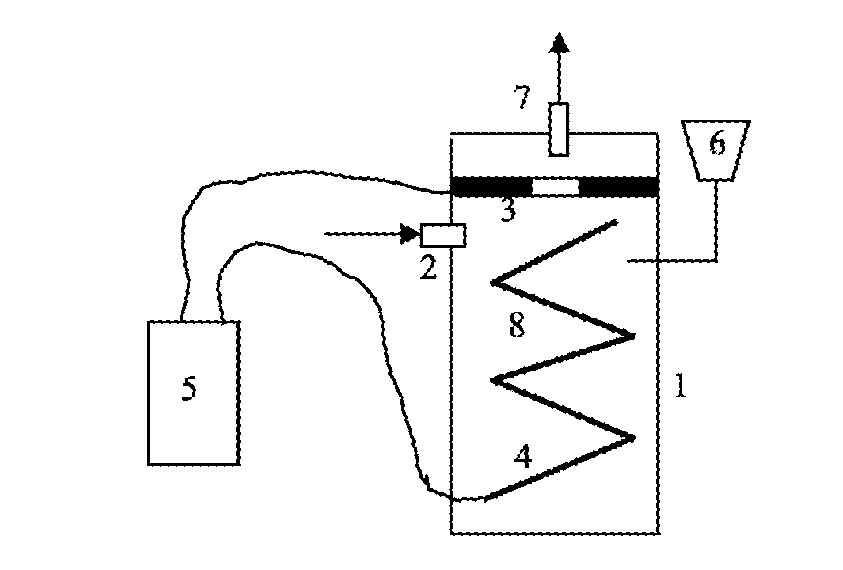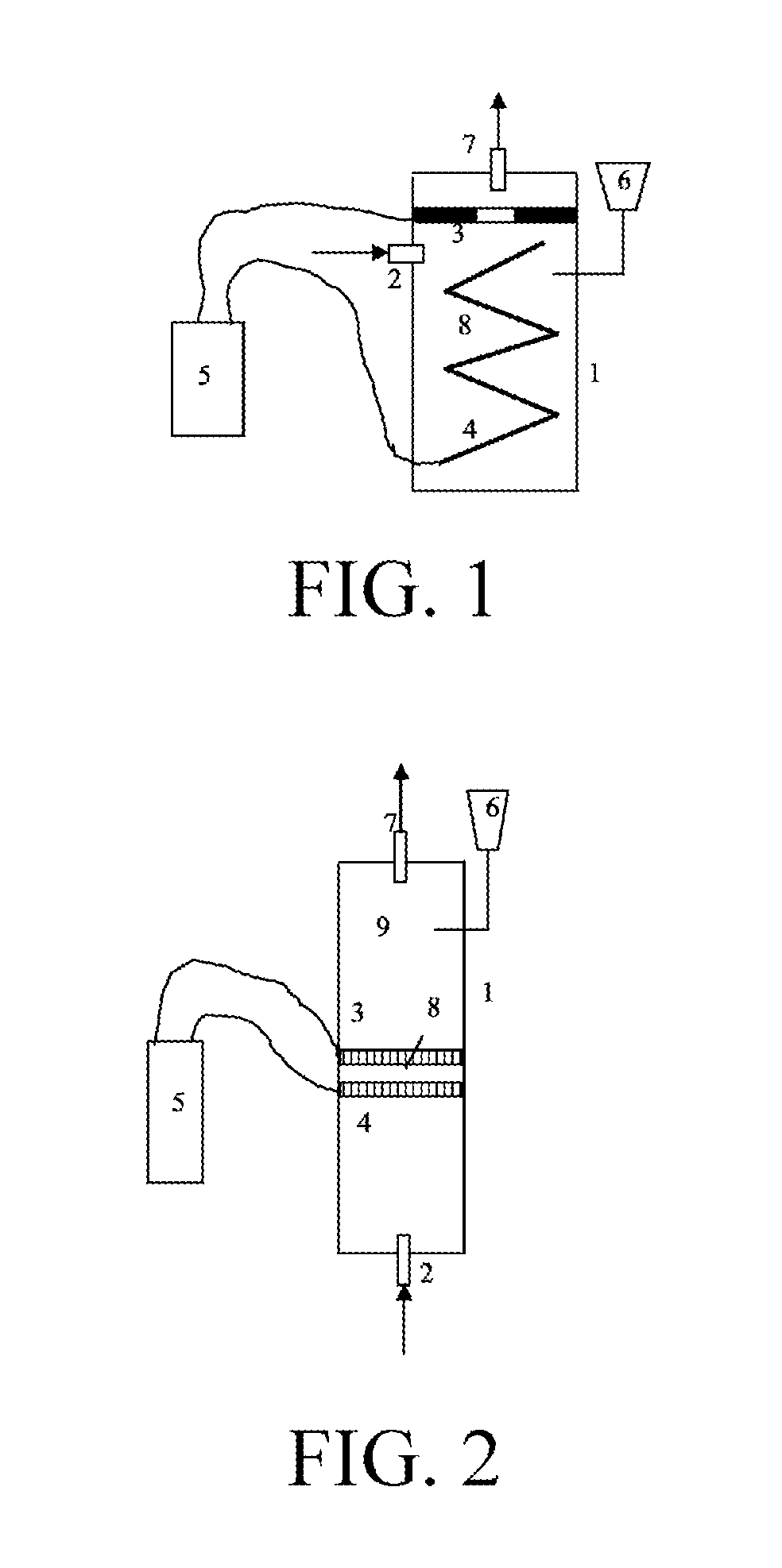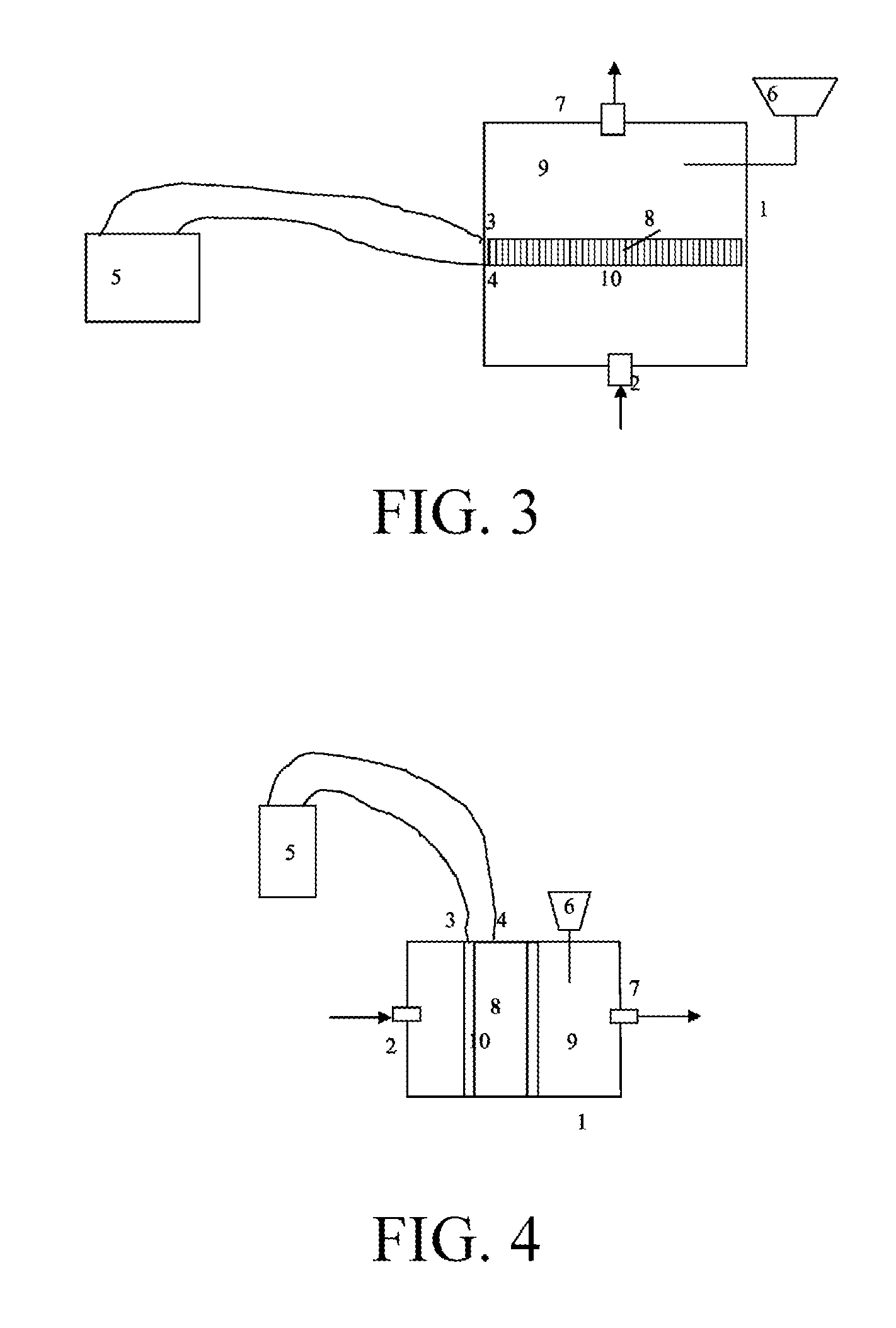Apparatus for plasmatizing solid-fuel combustion additive and method for using the same
a technology of solid-fuel combustion additive and apparatus, which is applied in the direction of solid-fuel combustion, lighting and heating apparatus, plasma technique, etc., can solve the problems of many limitations of the various current addition methods of combustion additives, inability to achieve fuel, and great harm to the health of the operating personnel, so as to reduce the cost, facilitate the addition of flexibly and accurately, and achieve the effect of convenient and accurate addition
- Summary
- Abstract
- Description
- Claims
- Application Information
AI Technical Summary
Benefits of technology
Problems solved by technology
Method used
Image
Examples
embodiment 1
[0059]FIG. 1 is a schematic diagram of one embodiment of the apparatus for plasmatizing solid-fuel combustion additive of present invention. In this set-up, the high-voltage discharge between electrodes employs a gliding arc discharge. In this embodiment, the carrier gas with certain velocity enters the reaction vessel in tangential direction, the velocity of the carrier gas flow needs to be high enough (for example, about 10 m / s) to form a gas swirl in the reaction vessel, and the gas in the swirl state enters the electrode region, thereby the plasma is generated and a gliding arc is formed in the electrode region. The plasma generated and the combustion additive entered in the electrode region contact with each other, and energy exchange occurs between the plasma and the combustion additive, so that combustion additive is rapidly evaporated and partially plasmatized. The resulted vapors and plasma leave the reaction vessel through the outlet of the plasma reactor under the driving...
embodiment 2
[0061]FIG. 2 is a schematic diagram of another embodiment of the apparatus for plasmatizing solid-fuel combustion additive of present invention, in which the high-voltage discharge between electrodes is corona discharge. The carrier gas with certain flow speed enters the reactor through the bottom, and passes through the corona discharge region where the plasma is formed. The plasma generated contacts with the combustion additive entered in the plasma reaction region. Energy exchange occurs between the plasma and the combustion additive. The combustion additive is then rapidly evaporated and plasmatized, and leaves the reaction vessel through the outlet of the reactor under the driving of the carrier gas, and enters the combustion system.
[0062]In FIG. 2, 1 represents the reaction vessel, 2 represents the gas intake device, 3 represents the cathode, 4 is the anode, 5 represents the power supply, 6 represents the feed device, 7 represents the outlet of the plasma reactor, 8 represents...
embodiment 3
[0064]FIG. 3 and FIG. 4 are schematic diagrams of another embodiment of the apparatus for plasmatizing solid-fuel combustion additive of present invention, in which the high-voltage discharge between electrodes is dielectric barrier discharge. The carrier gas with certain flow velocity enters the reactor through the bottom or the side of the reactor, passes through a corona discharge electrode region, and forms the plasma. The plasma generated and the combustion additive entered contact with each other in the electrode and plasma regions; and the energy exchange occurs between the plasma and the combustion additive so the combustion additive is rapidly evaporated and plasmatized. The resulted plasma gas leaves the reaction vessel through the outlet of the plasma reactor under the driving of the carrier gas, and enters the combustion system.
[0065]In FIG. 3 and FIG. 4, 1 represents the reaction vessel, 2 represents the gas intake device, 3 represents the positive electrode, 4 represen...
PUM
 Login to View More
Login to View More Abstract
Description
Claims
Application Information
 Login to View More
Login to View More - R&D
- Intellectual Property
- Life Sciences
- Materials
- Tech Scout
- Unparalleled Data Quality
- Higher Quality Content
- 60% Fewer Hallucinations
Browse by: Latest US Patents, China's latest patents, Technical Efficacy Thesaurus, Application Domain, Technology Topic, Popular Technical Reports.
© 2025 PatSnap. All rights reserved.Legal|Privacy policy|Modern Slavery Act Transparency Statement|Sitemap|About US| Contact US: help@patsnap.com



